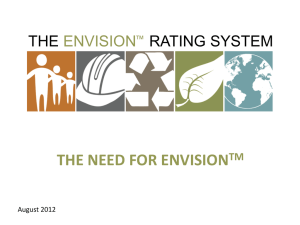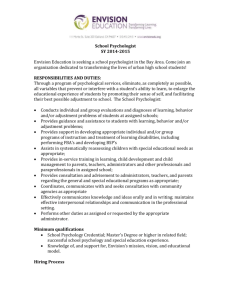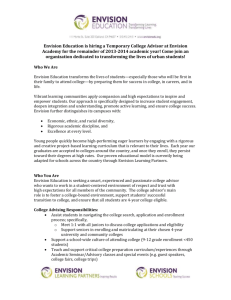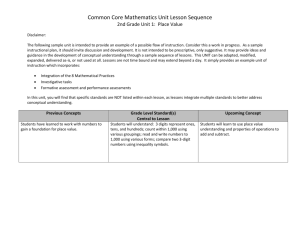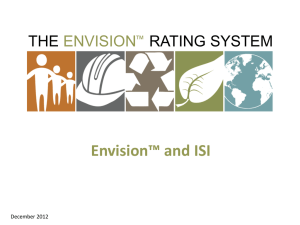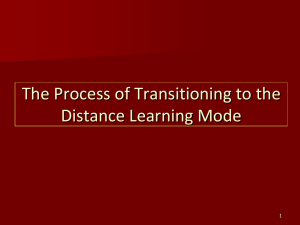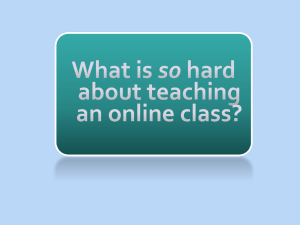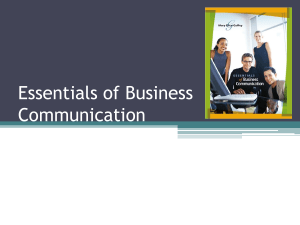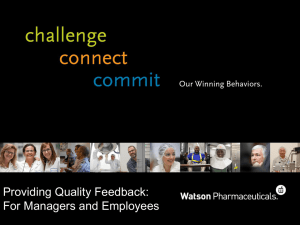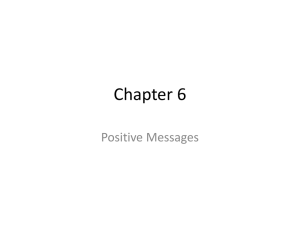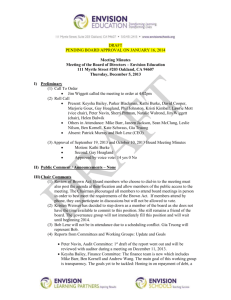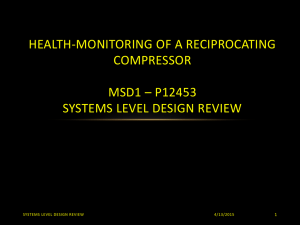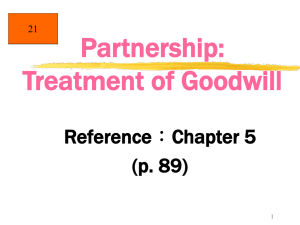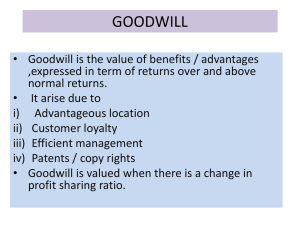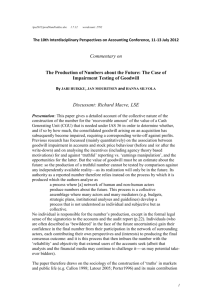Chapter 4: planning written & spoken messages
advertisement
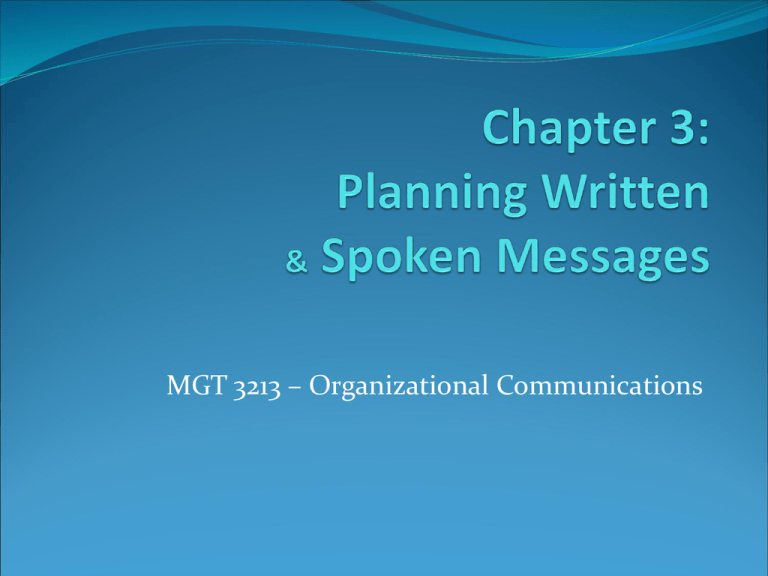
MGT 3213 – Organizational Communications Process for Planning and Preparing Spoken and Written Messages STEP 1 Consider the applicable contextual forces STEP 2 STEP 3 Determine Envision the purpose the & select an audience appropriate channel & medium STEP 4 STEP 5 Adapt the Organize message the to the message audience’s needs & concerns STEP 6 STEP 7 Prepare the first draft Revise & proofread for accuracy & desired impact Step one: Consider the applicable contextual forces Organizational Culture “A pattern of shared basic assumptions that the group learned as it solved its problems of external adaptation and internal integration and which has worked well enough to be taught to new members as the correct way to perceive, think, and feel in relation to these problems.” Socialization Not just behaviors, communication too Step one: Consider the applicable contextual forces Characteristics of organizational culture Innovation and risk taking Attention to detail Outcome orientation People orientation Team orientation Aggressiveness Stability Step one: Consider the applicable contextual forces Physical Social Chronological Cultural Environmental Step two: Determine the purpose & select the channel & medium What do you hope to accomplish with the message? Get information Answer a question Accept an offer Deny a request Sell or get support for a product or idea Apologize What is the central idea of your message? Step two: Determine the purpose & select the channel & medium Two-way, face-to-face (group meeting, one-on-one) Two-way, not face-to-face (phone, email) One-way, not face-to-face (letter, memo) Step two: Determine the purpose & select the channel & medium Situation Channel/Justification Tell a customer damaged merchandise Telephone or face-to-face: Lends will be replaced importance to the message; more personal Notify a sales rep of job termination Telephone or face-to-face: Lends importance to the message; more personal Inform employees of a new Internet usage policy Email: Routine matter; mass distribution Step two: Determine the purpose & select the channel & medium Considerations richness vs leanness need for interpretation speed of establishing contact time required for feedback cost amount of information conveyed need for permanent record control over the message Step three: Envision the audience Anticipating how the audience will interpret and respond to your message Put yourself “in their shoes” Why is this step important? Allows you to avoid miscommunication! Maximizes the effectiveness of your message Step three: Envision the audience • Gather AS MUCH INFORMATION AS POSSIBLE about the audience of your message • Age • Economic level If you can only • Education/occupational background choose one of • Needs and concerns of the audience these items, which one should • Culture you pick? • Rapport • Expectations • If nothing else, imagine how you would react if you were the one receiving the message Step three: Envision the audience Situation Tell a customer damaged merchandise will be replaced Notify a sales rep of job termination Inform employees of a new Internet usage policy Step three: Envision the audience • Also ask, what type of audience am I addressing? • Managers: Just the facts, be as concise as possible (or have good executive summaries) • Experts: Use standard technical terms, don’t exaggerate or overstate your claims • Nonexperts: Avoid jargon, use lots of definitions and explanations • International/multicultural: Avoid slang, colloquialisms, culture-specific says (e.g. “under the weather”) Step four: Adapt the message to the audience Try to be receiver-centered Does the message address the receiver’s needs and concerns? Will the receiver perceive the ideas to be fair, logical, and ethical? Are the ideas expressed clearly and concisely (to avoid the embarrassment of miscommunication)? Does the message promote positive relationships? Is the message sent promptly? Is the message professional, high quality? Focus on Receiver’s View Point “I” or Sender-centered “You” or Receiver-centered I want to congratulate you on your award. Congratulations! You are the Employee of the Year. I am interested in ordering . . . Please send me . . . (You is the understood subject.) I give you permission to take an extra day of vacation. You earned an extra day of vacation because of your performance. The power of words Why did Kentucky Fried Chicken change its name to “KFC”? Why is the corn industry lobbying the FDA to change the name of high-fructose corn syrup to corn sugar? Richard Weaver Communicating to convey goodwill What is goodwill? The ability to create and maintain positive, productive relationships An intangible asset arising from the reputation of its business and its relations with its customers How do you do this? Be nice Be honest Be fair Be ethical Establish trust Building & protecting goodwill • Use euphemisms cautiously • What are some examples of euphemisms? • • Sanitation worker = garbage collector • Correctional facility = prison Double-speak, corporate speak • Above-board = ? • Peer management = ? • Rightsize = ? http://www.youtube.com/watch?v=ZIxcxfL5jasright Building & protecting goodwill • Avoid condescending or demeaning expressions • Bean counter = ? • Spin doctor = ? • Ambulance chaser = ? • Shrink = ? • Use connotative tone cautiously • “harped on” vs. discussed • “dealt with” vs. handled or managed • Use bias-free language • Defamatory remarks Step five: Organize the message • Make an outline! • Benefits of outlining your message: • Encourages accuracy and brevity • Permits concentration on one phase at a time • Saves time in structuring ideas • Provides a psychological lift • Facilitates appropriate emphasis of ideas Step five: Organize the message • Sequence • Time • Space • Familiarity • Importance • Value
